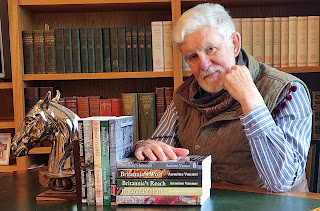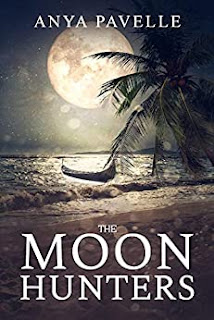Last year, I invited a number of authors to send suitable characters from their books to interview for an imaginary job in my imaginary company. Now a New Year is upon us, and as CEO of this company I've decided that my workforce needs to learn new skills for 2022. I've invited some more characters along to the blog, this time to deliver some workshops, and my employees have gathered in the lecture theatre for a Q&A session with Kung Li, sent by his author, Antoine Vanner:
AW: Settle down everyone, phones off, and let's give a warm welcome to our guest today, Mr Kung Li, a Chinese gentleman called also known as Fred Kung, whom the Royal Navy’s Captain Nicholas Dawlish encountered in Korea in 1882. The main events of Dawlish’s assignment there are described in Britannia’s Spartan. Kung Li appears before us this evening looking much as he did when Dawlish first encountered him in Seoul:
“When the arrival of the Chinese ambassador’s representative was announced in early afternoon, Dawlish expected a silk-clad mandarin with long sleeves and longer fingernails. But the man who spoke for the envoy of the Son of Heaven wore a shabby European-style jacket with a Paisley scarf at his throat and whipcord riding breeches stuffed into dusty boots. He wore no queue beneath his broad-brimmed hat – his hair was cropped as close as Dawlish’s own – and a revolver protruded, butt forward, from a holster belted over his jacket on the right side.”
Welcome! Would you like to introduce yourself?
Fred Kung: I’m Kung Li, ma’am – though foreign devils like yourself know me better as Fred Kung. They call me a ‘Yankee Chinaman’ and Chinese call me an American.
AW: What’s the lesson you’re going to give us, Mr. Kung?
Fred Kung: The most important in the world, ma’am. Don’t just survive. Win.
AW: Excellent. Now, all my attendees have read the resume you sent. They'd like to ask you some questions. First it's Janine, head of overseas trade:
Janine: Your English is fluent and you’ve a strong American accent. Why’s that?
Fred Kung: I came to the States in ’66, just another illiterate coolie shipped across from Kwantung to drill and hack and freeze and die to drive the Central Pacific railroad through the Sierra Nevada in California. (Hey, you there! Let’s see the first picture.) That’s what we looked like and we were used worse than cattle an’ worth less than mules).
But I see you’re been trying to be polite, ma’am, that you’re pretending you haven’t noticed that my right hand is mutilated. Here, let me hold it up. Take a look – I’m not ashamed of it. Just a thumb and little finger. All that’s there, nothing more. That’s why I draw and shoot with my left. And damn well too. If you’d like to step back ten yards an’ hold up a five of spades for me I’ll put a bullet through each pip. I’ve pack with me and –
AW: (laughs nervously) Well, not today! But perhaps some other time . . . Please continue.
Fred Kung: Nitro-glycerine an’ blasting Central Pacific Tunnel Number 6 did for that hand an’ it was best thing ever happened me. They gave me twenty dollars compensation for it an’ cut me loose. The timing was damn lucky too – the rest of my team were buried in a rockfall a week later.
AW: Pauline from Human Resources has a question
Pauline: I take it that with a shattered hand there was no more work for you on the railroad?
Fred Kung: Take a look at the next picture, ma’am. (Hurry, let’s have it up!)
AW: I knew I shouldn't have let Simons be in charge of the overhead projector... Ah, there we go.
Fred Kung: That was the sort of work it was. I wouldn’t have gone back to it even if I could. And I’d have starved if I hadn’t recognised what all those thousands of poor despised Chinese drudges slaving through the Sierra feared more than death itself – burial in foreign soil, ma’am. I’d got those twenty dollars to start in business with. And those coolies were most of ‘em ready to pay me fifty cents a month for a guarantee that they’d be shipped home to graves with their ancestors. Good business to, and in time I made enough to branch out into deals with ship-owners, an’ into money-lending too. And then a few lines of business that respectable ladies like yourself wouldn’t want to know about. But profitable for all that. Gentlemen in the audience might guess what I mean.
Edward, Chief Accountant: And I gather that you put the profits to good use?
Fred Kung: I could see bigger opportunities, and for that I saw that needed education, western education. I started by paying a washed-up Chinese trader to teach me to read and write what I’d been speaking all my life. Then a drunken American schoolteacher was glad of a few bucks to school me in good English. And when I’d made enough to buy an American education, I bought me one at a Presbyterian college near Oakland. (Let’s have the next picture up!)
That’s me there, Masterson College class of ’72. They thought I’d go back to China as a missionary. Yet for all the talk there about gentle Jesus sweet and mild, and brotherly love, I was still a Chinaman in America, a Chink, a Celestial, a jumped-up coolie, still despised, still unwelcome. But I was one who by now could talk and think and reason like an American as well as a Chinese. So I had something that both Chinese officials and Western businessmen would pay well for – an understanding of the other side’s way of thinking. I could be anybody’s go-between – at a price – and that’s why, after a lot we don’t need to talk about, I was in Seoul, Korea, in 1882.
AW: What were you doing there when Captain Nicholas Dawlish met you?
Fred Kung: Let’s just say that I was representing the interests of the Chinese Empire and doing jobs for the Chinese ambassador that he couldn’t afford to be seen doing for himself and saying things he didn’t want to be heard saying. China had nominal sovereignty over Korea for centuries but now the Japanese were out to displace us, and they meant nothing nominal about it. They’re impressive, damned impressive, those Japanese, and they’ve made themselves a modern industrial and military power in a way that China hasn’t. They’ve got ambitions, big ambitions, and they’ll stop at nothing. And taking Korea’s to be the first step. The Korean king is a weak fool whom they intended to control. And the only real man at the court is his wife, Queen Min. (Next picture please – even if it doesn’t do her justice!)
What a woman she is! Smart and beautiful but deadly as a rattlesnake, ready to make a deal with Satan himself if it would keep the Japanese out. And when this British naval officer, Captain Nicholas Dawlish, arrived on a diplomatic mission I saw that he could be useful for the game I was playing. Queen Min saw that too. It turned out to be a more dangerous game than even I expected - and all three of us ended up using the others for our own ends.
Richard, Head of CPD (Continuing Professional Development): Did your previous experience help you then?
Fred Kung: I’ve learned one big lesson in life, sir. It’s that they – whoever ‘they’ are – can do anything to you that you’re not strong enough to stop them doing. When you’ve started life by being valued lower than an animal – as I did – you can’t afford to think much about good or bad. You think first about survival.
But if you’re smart you think beyond that, you think of prevailing, of winning. of taking for yourself what nobody wants to give you willingly. So, good or bad, what matters to me is that I can sell my services high, to Westerners, to Chinese, to Koreans, to whoever’s prepared to pay. I may not be liked, but I’m needed, and I’m going to keep it that way. And I must stay alive too when so many would like to see me dead. That’s why my bodyguards are Uighurs from Western China, with no love lost between ’em and their Manchu overlords. They’re mean twenty-four carat sons of bitches who’re loyal to nobody but me, and that only because I pay them well. (Let’s have the next picture up!)
There they are – and they’re worth their weight in gold!
AW: But I gather that Captain Dawlish valued your support, even if he didn’t wholly trust you? But what did you think of him?
Fred Kung: “Support” isn’t really the word, ma’am. Let’s just say that my interests coincided for a while in Korea in ’82. with those of the Britisher Nicholas Dawlish My own interest’s the only basis on which I judge any relationship. But I like Dawlish, probably more than I can afford to, but to be straight with you, I think he’s something of a fool. He’s clever and he’s brave, but he doesn’t see that his notions of honour and duty don’t profit him. They’ll get him killed at some stage. (Next picture please!)
That’s the world he sworn himself to, as bound by tradition and notions of loyalty as the Imperial Chinese Court itself. He may bend the rules if he has to, but he still wants to rise in that world. And the people he risks his life for – like Queen Min herself, or his own Queen Victoria – wouldn’t give a damn whether he lives or dies as long as their interests are served. He’s ambitious, no doubt of it, but that idea of honour comes into it for him all the time and financial gain doesn’t enter it at all. He left Korea not a penny richer than when he came. I guess that when you’ve grown up comfortable in a country where the law protects you, then you can afford to think like him. I couldn’t. I’d be dead now if I did.
Jessica, Marketing and Social Media: Would you like to see your own life covered in a book, or books?
Fred Kung: My life could be considered adventurous, and I’ve now got a lot of irons in the fire in places you might not expect in China and South-East Asia, and in California and Nevada and in Oregon too. But I’d prefer that nothing is known about them. I’m none too happy that Dawlish might have recorded more than I’d like known. But if in the future some writer fella gets his hands on Dawlish’s papers, then he’s welcome to write a book about me if it’s after I’m dead. It won’t worry me none then.
AW: Thank you, Mr. Kung! Perhaps your and Dawlish’s paths may cross again! Let's all show our appreciation and give a round of applause for Mr Kung! He's left some marketing materials which will tell you a bit more about Dawlish and his creator, so don't forget to pick one up before you leave. And Simons, please remove the slides of your stag do from the overhead projector. No one wants to see those...
Find out more about Antoine Vanner here: Dawlish Chronicles




































